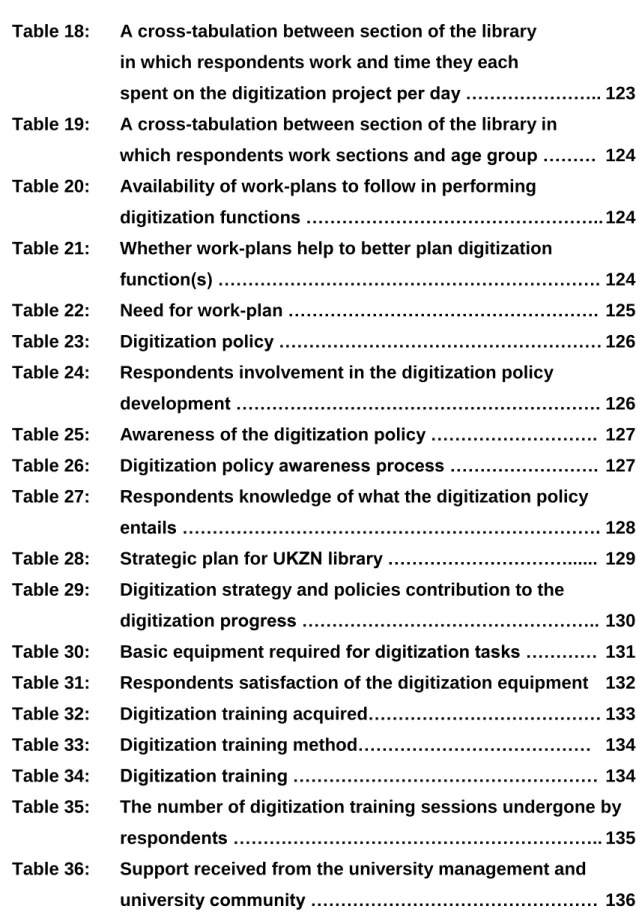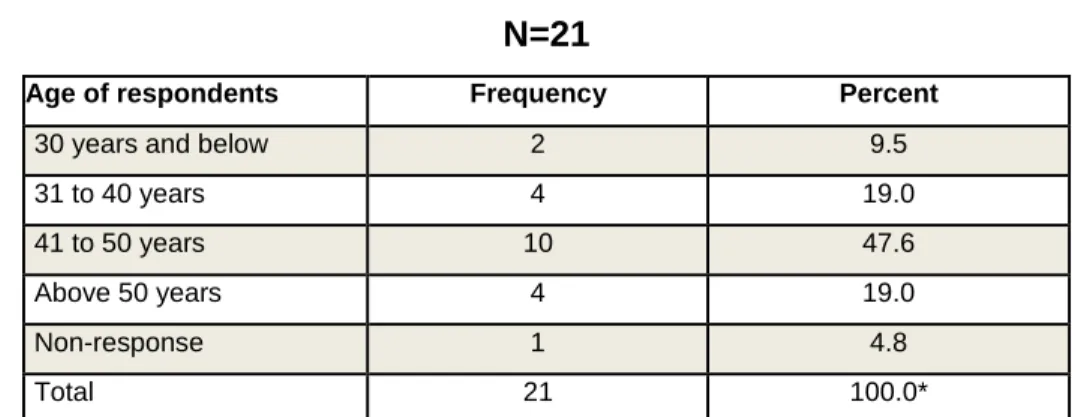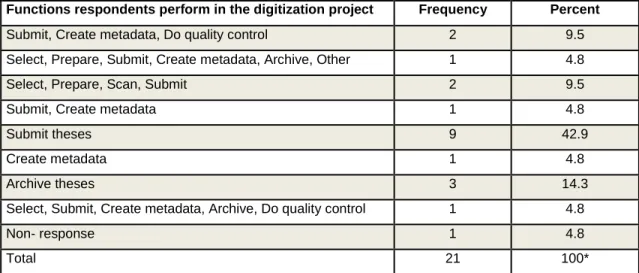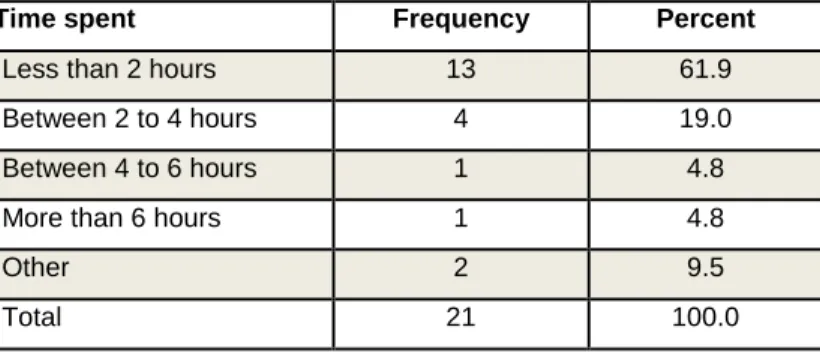This study examined the digitization of theses and dissertations at the University of KwaZulu-Natal. The population of the study consisted of the entire library staff involved in the digitization of theses and dissertation projects at the University of KwaZulu-Natal.
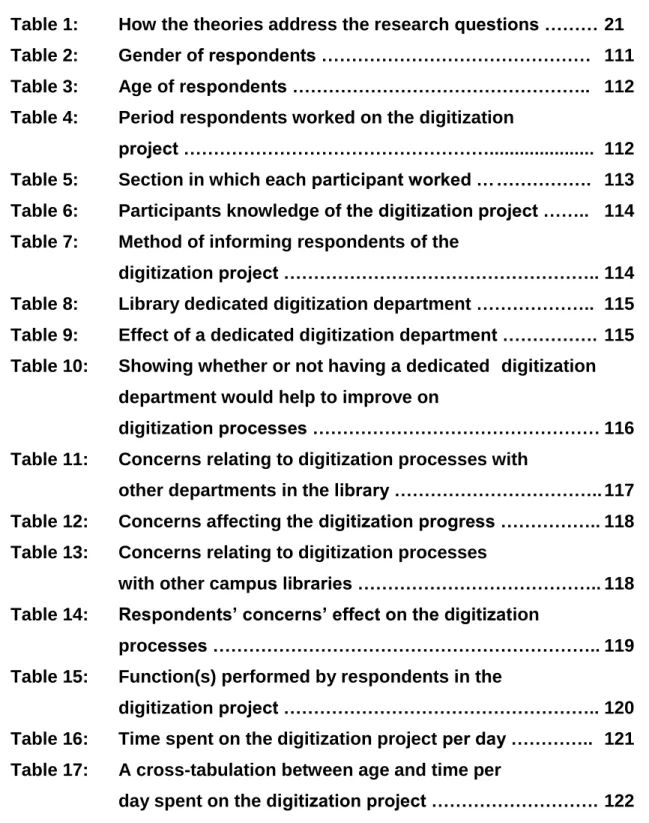
- BACKGROUND OF THE STUDY
- BRIEF BACKGROUND OF UKZN
- Brief background of the UKZN library
- DIGITIZATION OF THESES AND DISSERTATIONS
- Developed countries
- Developing countries
- South Africa
- DIGITIZATION OF THESES AND DISSERTATIONS AT UKZN …. 10
- DEFINITION OF CONCEPTS
- Digitization
- Digital Librarian
- Digital Libraries
- Institutional Repositories
- PROBLEM STATEMENT
- SIGNIFICANCE OF THE STUDY
- AIM AND OBJECTIVE OF THE STUDY
- KEY RESEARCH QUESTIONS
- THEORETICAL FRAMEWORK
- RESEARCH DESIGN AND METHODOLOGY
- DELIMITATIONS OF THE STUDY
- STRUCTURE OF THE DISSERTATION
- SUMMARY
According to the UKZN Library Annual Review (2009:1), at the time of its launch, ResearchSpace only included doctoral and master's theses and dissertations produced at the University. They indicated that the lack of a formal digitization policy reflects "the unplanned approach of the libraries to digitization activities".
THEORIES GUIDING THE STUDY
- Communication Theory
- Communication Theory in relation to this study
- Conversation Theory
- Conversation Theory in relation to this study
- Data Curation Lifecycle Model
- DCC Curation Lifecycle Model in relation to the study 25
According to Klemm (2002:5), the ability to make wise decisions is one of the important steps in the digitization project. According to Halbert, Skinner, and McMillan, the data curation life cycle model provides an overview of the stages for curating and preserving a digital collection.
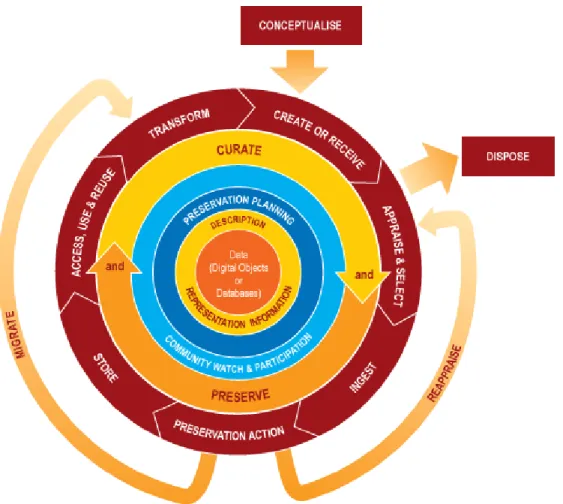
ELECTRONIC THESES AND DISSERTATIONS IN THE
- North America
- South America
- Europe
- Australia
- Asia
- Antarctica
- Africa
- South Africa
According to Eke (2011:1), digitization of theses and theses in the university libraries of Jos and Obafemi Awolowo Universities (both in Nigeria) provided a model for Ahmadu Bello University (ABU), also in Nigeria, under the Association of African Universities - Database of African Dissertations and Dissertations (AAU-DATAD) program, to begin digitizing its postgraduate theses and dissertations. The university made it mandatory for students to submit digital files of their theses and dissertations.
DIGITIZATION OF LIBRARY MATERIALS
BENEFITS OF DIGITIZATION
Alhaji (2007:3) pointed out that digitization of library materials contributes to improving accessibility, as access to the digitized materials can be obtained at any time, regardless of where the physical library is and whether it is open or closed. Jagboro, Omotayo and Aboyade (2012:2) pointed out that digitization of library materials provides wider access to materials by making them available electronically.
PRINCIPLES OF DIGITIZATION
IFLA (2002:8) indicates that digital technologies offer the opportunity to preserve the original by providing access to a digital surrogate. The technological approach to digitization must meet the project objectives and take into account the characteristics of the documents, such as the principle of provenance or the sanctity of the original order.
FACTORS TO CONSIDER IN THE DIGITIZATION
- The intellectual and physical nature of the source
- The number and location of current and potential users 39
- The format and nature of the proposed digital product … 40
Hazen and others (1998:9) argued that digitization resources can be selected according to the frequency of use of the materials, regardless of the fact that the hardly used materials are more frequently used. According to Hazen and others, the nature and format of the materials for digitization also count, and it will be important to check whether the library has the means to handle and accommodate the type of materials to be digitized.
GUIDELINES FOR STARTING AN INSTITUTIONAL
PHASES OF DIGITIZATION
- Planning processes for a digitization project …
- Implementation
- Organizational support
- Digitization strategy and policies
- Know what you have
- Know your users
- Determine your selection principles and rules
- Describe the digital items and collections
- Availability of specialized staff
- Staff requirements for digitization
- Staff training for digitization projects
- Qualities for a digital librarian
- Compound knowledge structure
- High-level information literacy
- Excellent personality
- Staff retention
- ICT Infrastructure
- Management of collection and selection of digital
- Copyright/intellectual property rights
- Information management
- Content capture
- Logistics
- Pipeline
- Text capturing
- Creating metadata
- Quality assurance
- Communication and co-ordination
- Service delivery
The planning processes for the digitization project must be done from the beginning of the project to the end. Hammond and Davies (2009:10) pointed out that organizational support is one of the decisive aspects for the success of the digitization project. According to Hammond and Davies, managing information is one of the most challenging aspects of the digitization project.
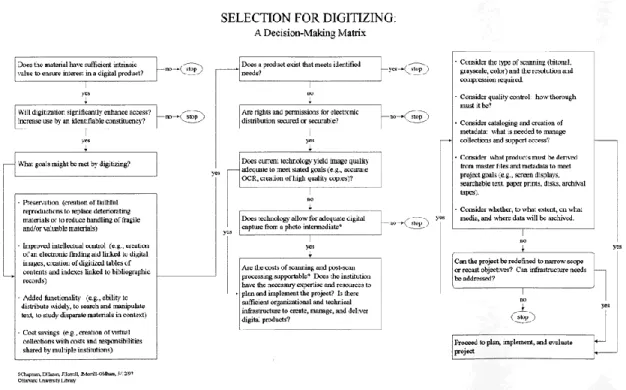
PROJECT MANAGEMENT
- Project management in a library context
- Definition
- Formalization
- Implementation
- Completion
- Project planning
According to Middleton (1999:Library project management), the definition phase of the project is the phase in which the project is identified and in which individuals and participating teams are identified. It is at this stage that the preliminary costs of the project are made and a business case is drawn up. This is also the phase in which the relationship between the project itself and the objectives of the institution is established.
DIGITIZATION CHALLENGES FACED BY LIBRARIES …. 77
- Digitization costs
- Staff training
- Lack of human resources
- Staff support
- Technology
- Time
- Copyright
According to Kipaan (2012: Introduction), one of the challenges for the digitization projects is managerial and financial constraints. Copyright has been cited as one of the major issues affecting the digitization of library materials. According to Yiotis, most libraries in the United States raised ownership of property rights as one of the issues of concern.
SUMMARY
RESEARCH QUESTIONS FOR THE STUDY
RESEARCH DESIGN
- Research paradigm
- Pragmatic paradigm
- Categories of the research design
- Exploratory research
- Causal research
- Descriptive research
- Exploratory, causal and descriptive research
- Category selected for this study
- Research methods
- Qualitative research method
- Quantitative research method
- Mixed research method
- Type of mixed research methodology employed
- Concurrent triangulation and theoretical framework
- Population of the study
- Sample of the study
- Data collection method
- Construction of the research instrument
- Construction of the questionnaire
- Construction of the interview schedule
- Pre-testing of the research instrument
- Changes made to the questionnaire and interview
- Questionnaire
- Interview schedule
- Administration of the questionnaire
- Administration of the interview schedule
- Validity and reliability of the study
- Research hallmark to enhance validity and reliability …
- Data analysis
- Ethical issues observed
According to Gerring, the sample of the investigation is defined as “the evidence that will be subjected to direct examination.” Confidence refers to “the probability that the assessment made in the research results is correct.” To ensure accuracy and confidence, the researcher must. Objectivity: According to Nouri (N.d.:6), conclusions should be based on the facts of the findings derived from actual data, and not on the researcher's own subjective or emotional values.
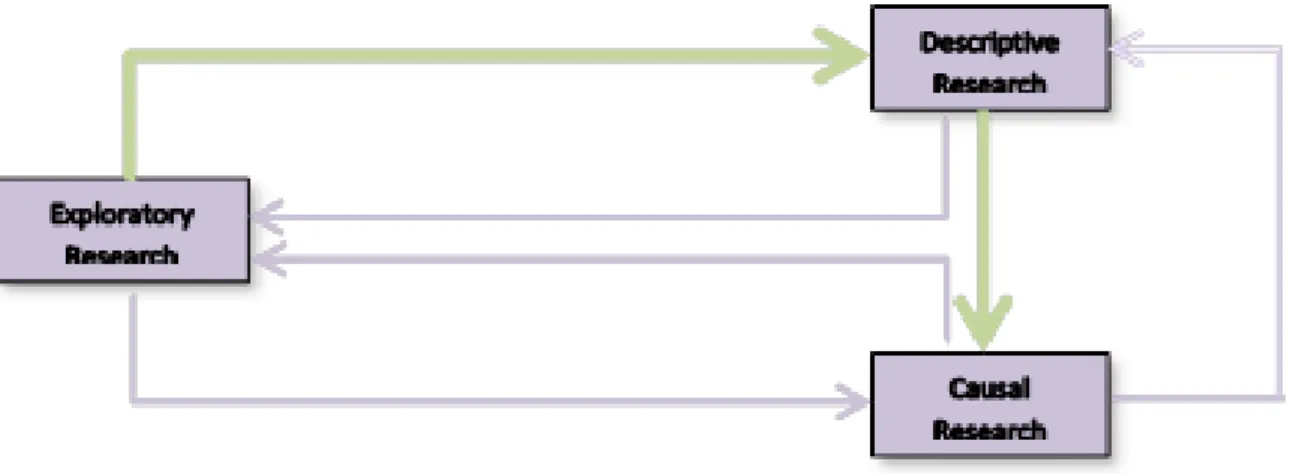
SUMMARY
INTRODUCTION
THE RESPONSE RATE
PRESENTATION OF RESULTS
- Demographics
- Background
- Cross-tabulation
- Strategies and policies
- Equipment/facilities
- Staff training
- Staff support
- Technical support
- Library challenges
Out of the 21 respondents indicated that they were involved in the digitization project, and three (14.3%) indicated that they had nothing to do with the digitization project. Of the 14 respondents who indicated that digitization strategy and policies contribute positively to digitization progress, nine (64.3%) answered question 39. Two (50%) indicated that their computers are too slow and one (25%) ) indicated that the library needed the latest equipment to produce results faster.
Of the 21 respondents who indicated that they received training on digitization, four (19.0%) indicated that they did not receive training and one (4.8%) was not sure whether they received training or not. Three (14.2%) stated that they always experience other technical problems in connection with the digitization project, and one (4.8%) has hardly experienced any other problems.

FACE-TO-FACE INTERVIEW RESULTS
- Demographics
- General questions
- Strategies and policies
- Equipment/facilities
- Staff training
- Staff support
- Technical support
- Library challenges
- Time and budget
They believed that some library staff did not know anything about the project. Harvest data was mentioned by one (11.1%) of those interviewed as a problem to be solved. The remaining three (33.3%) interviewees were not sure if the costs fit within the planned budget, but were positive that the project was worth the cost.
SUMMARY
When asked whether or not the cost of digitization matches the planned budget and whether the project is worth the cost, six (66.7%) respondents confirmed that the cost matches the planned budget and that the project is worth the cost. One (11.1%) of the interviewees emphasized that the university is proud to see its researchers exposed through digitization. When asked if the library has enough time to complete the dissertation retrospective and digitization project, most answered yes, the project is almost finished.
INTRODUCTION
The two theories, communication and conversational theories, helped the researcher observe the role that conversational engagements with stakeholders played throughout UKZN's digitization project as one of the key issues for the project's success. The Data Curation Lifecycle Model helped the researcher understand the digitization process and identify steps implemented in UKZN's digitization project. In this chapter the researcher presents the findings based on the research carried out at the UKZN library involving staff who were part of the digitization project in one way or another.
DEMOGRAPHICS
How much support does the digitization of dissertations and theses have from the staff involved in the project. The researcher sees this as a positive aspect in the digitization process at the UKZN library. Results showed that more staff were involved in the digitization project from other departments, namely information and technical services.
BACKGROUND
Regardless of the fact that most of the respondents were directly or indirectly involved in the digitization project, there were different answers as to whether the library has a digitization department. Implicitly, the researcher assumes that the respondents were aware of the poor communication, planning and control of the digitization process. The issue of lack of communication and proper planning was raised as some of the concerns affecting digitization processes, both in the different libraries and across the five campuses.
STRATEGIES AND POLICIES
The literature review in Chapter 2, under digitization strategy and policies, section 2.10.4, showed that communication between all stakeholders is paramount in formulating the digitization strategy. Furthermore, as mentioned in the literature reviewed in Chapter 2, under communication and coordination, the UKZN library ensured that the Department's requirements were met. The quantitative data obtained from the study showed that, out of 21 respondents, only eight (38.1%) indicated that the library has a digitization policy were not sure and two (9.5%) said that the policy did not exist.
EQUIPMENT/FACILITIES
STAFF TRAINING
The results show that most of the respondents indicated that they were trained by a colleague. Regardless of the training received answered that the training received was useful and one (4.8%) was not sure if the training was useful or not. As discussed in Chapter 2, staff training for digitization projects, section 2.10.5.2, staff training was one of the most important elements in the digitization project.
STAFF SUPPORT
Twelve (57.1%) indicated that the project was not promoted library-wide or university-wide. According to some interviewees, the project was mainly promoted to some, mainly the Research Office and subject librarians, as they were the main players in the project. Two (22.2%) of those interviewed indicated that the project had never been advertised and therefore received no support, especially from academics.
TECHNICAL SUPPORT
There were seven (33.3%) respondents who indicated that it took less than two hours to resolve digitization-related technical issues, six (28.6%) that it took two to four hours, two (9.5%) , that it took four to eight hours , three (14.3%) that it takes more than eight hours, and the last three (4.8%) did not specify hours. Although most of the respondents indicated that it takes less than two hours to solve technical-related problems, there was a high percentage of respondents who indicated that solving technical problems took more than two hours. In the researcher's opinion, more than two hours was too long given that there were also downtime issues, and most respondents indicated that the downtime took 30 minutes to two hours to resolve and occurred between three and five times a month.
LIBRARY CHALLENGES AND OTHER PROBLEMS
A lot of time was spent on solving technical issues, time that could have been used in the digitization process. Respondents specifically indicated in Table 44 in the technical support section, 4.3.7 in Chapter 4 that downtime issues negatively affected the digitization process. Lack of communication seems to be the key point for most of the challenges encountered in the project.
TIME AND BUDGET
SUMMARY
CONCLUSIONS
- Background to the study
- Digitization strategies and policies at UKZN
- Basic facilities for the digitization project
- Training skills for the UKZN library staff
- Staff support for the digitization project
- Technical support for the digitization project
RECOMMENDATIONS
- Background to the study
- Digitization strategies and policies at UKZN
- Basic facilities for the digitization project
- Training skills for the UKZN library staff
- Staff support for the digitization project
- Technical support for the digitization project
FURTHER RESEARCH
SUMMARY
REQUEST FOR GATEKEEPER’S PERMISSION … 219
QUESTIONNAIRE
INTERVIEW SCHEDULE
